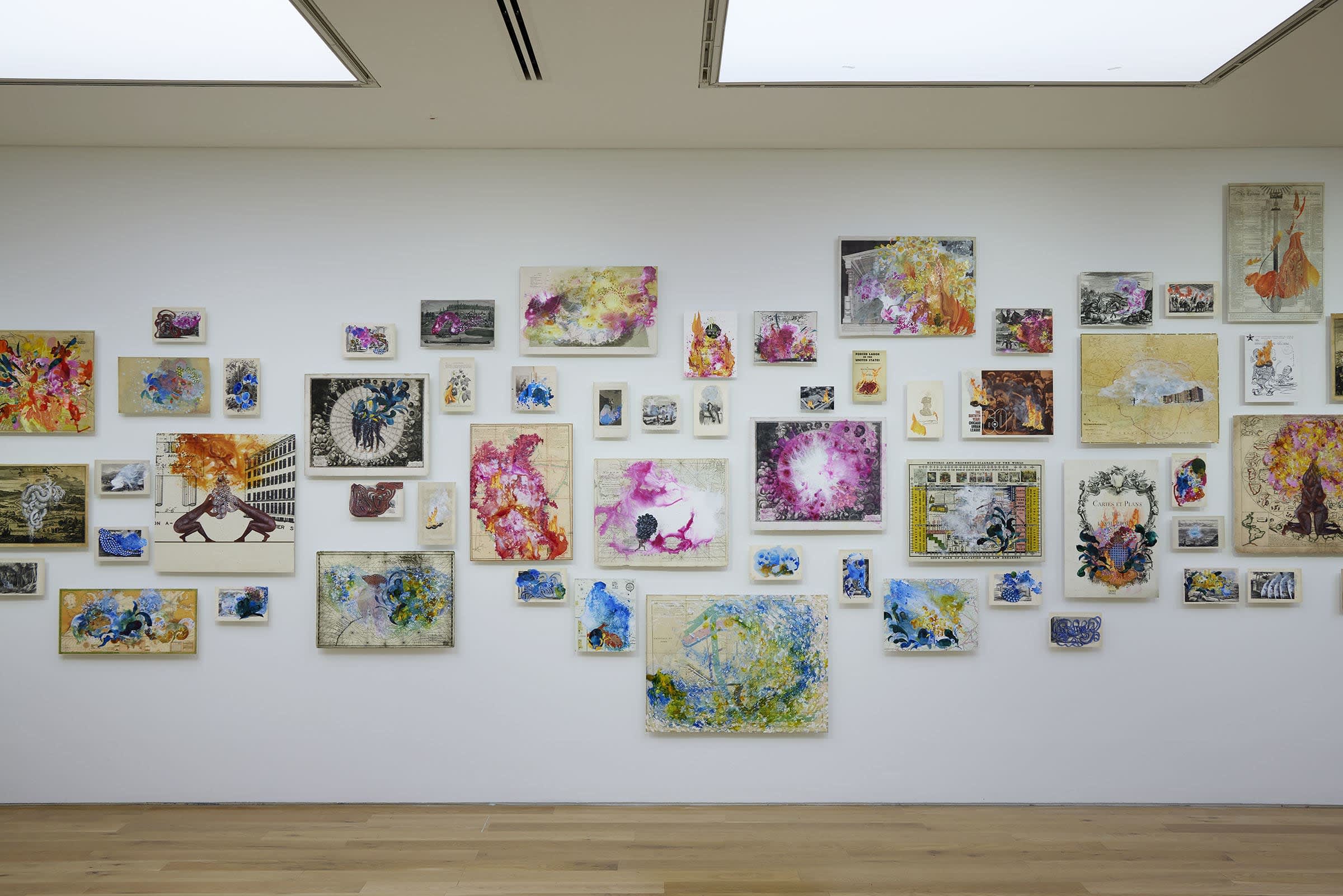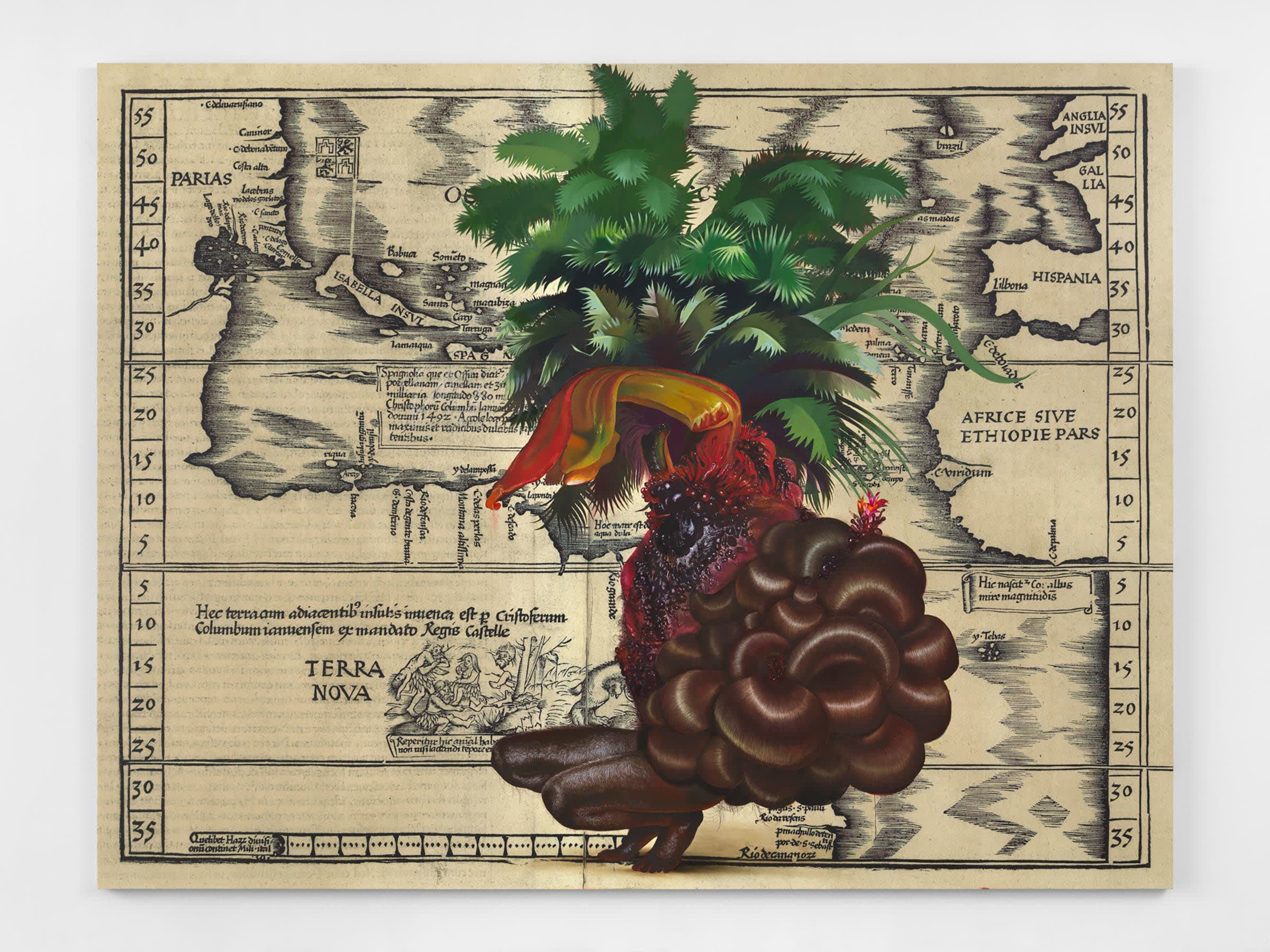In her intricate pieces, the Dominican Republic-born, Bronx-based painter taps into mythology, biology, and tradition
The Caribbean is never far in Miami. You feel it as you huddle under an awning and wait for a downpour to pass. It is that flavor in your cocktail not listed in the ingredients. Miami cherishes its elaborate construction projects, but like a coconut on the highway, its Caribbean spirits always manage to make their presence known. Such spirits have lately been a focus for Bronx-based painter Firelei Báez, who grew up in Miami, and whose work appears in ‘Forecast Form: Art in the Caribbean Diaspora, 1990s–Today’, which is on view at the Museum of Contemporary Art Chicago. Undulant and vegetal, her island nymphs squat on maps, and stare at the viewer from eyes set into faces without features, which seem to ask, ‘Why, exactly, do you want to see more?’


Firelei Báez, Untitled (Terra Nova), 2020. Photo by Phoebe d'Heurle.
As a New Yorker, my favorite piece of hers is Ciguapa Antellana, me llamo sueño de la madrugada (who more sci-fi than us) (2018) at the subway station in the traditionally Dominican Washington Heights. Ciguapas are a kind of Dominican mythical creatures, beautiful and dangerous. Yet, on the walls of the station, Antellana explodes into flowers collapsing the growth from the solid trunk of a curvy thigh. Has anyone created a better image of what it’s like to come home from work?
‘In most power relationships, you have the victim trying to solve the situation and I don’t want to create narratives of victimhood,’ Báez recently told Art21. ‘I want to flip it.’

